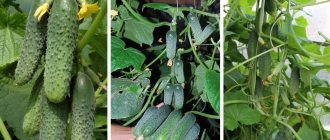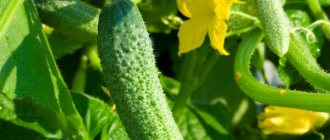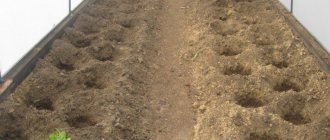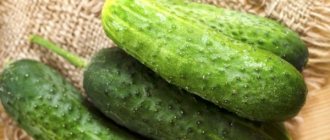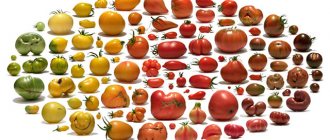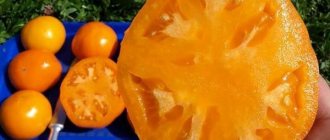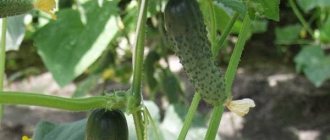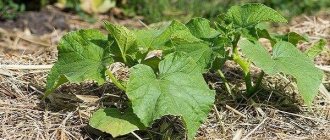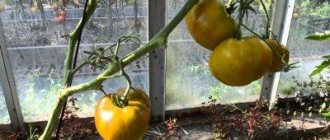Vegetable growing » Cucumbers
0
1772
Article rating
Kira Stoletova
Cucumber is a very popular vegetable that has been known to man for a very long time. Cucumber was grown and consumed by the ancient Greeks, and after that it spread throughout Europe. Nowadays, most salads can no longer do without cucumber, thanks to its juiciness and aroma. Among the different types of this vegetable crop, the cucumber variety Metelitsa deserves special attention.
Characteristics of the cucumber variety Metelitsa
Description and characteristics of the variety
The hybrid is actively cultivated in greenhouse and unprotected conditions.
The bushes are characterized by moderate growth and branching. The side trunks are compact and limited in the growing season; they grow short. Ripening is very early - the first gherkins are harvested 35 days after germination.
Blizzard f1 from the originator "Biotechnika" forms abundantly bunched ovaries. Up to 4 fruits ripen in 1 node. 13-14 greens ripen at the same time.
What are the characteristics of fruits?
- length 7-8 cm;
- weight 70 g;
- bright green peel;
- small light stripes;
- crispy, dense consistency of the pulp;
- no bitterness;
- aligned elongated shape.
The fruits are used in fresh recipes, for pickling and canning.
Landing rules
The area for Metelitsa f1 can be medium in area; it is certainly well lit and inaccessible to drafts. The greenhouse for the variety should be frequently ventilated - the cucumber does not like stuffy spaces. The walls of the greenhouse must be treated with a formaldehyde solution at least once every two weeks.
It is best to cultivate such a cucumber in chernozem, or medium loamy soil.
Soil preparation
The soil for the variety begins to be prepared in September, after the harvest. The soil under the cucumber is dug up to the length of a shovel, disinfected with Fitoverm solution and fertilized with compost or mullein. With the onset of spring, 4-5 days before the start of planting Metelitsa, the second stage of preparation begins. The area for cucumber is easily loosened, heated with boiling water and weeded, selecting the roots of weeds and insects that have overwintered in the soil and fed with wood ash.
Germination of seedlings
Metelitsa f1 seeds begin to be planted for seedlings early - in the first half of April. The variety material is added to peat pots - to a depth of 1.5 cm, 2-3 seeds in each. The soil mixture for cucumbers should include sand, turf, humus and chicken droppings. The temperature before germination is around 26°, after which it drops to 23°.
Water the Metelitsa variety sprouts daily, at sunset, making sure that the soil under the bushes does not dry out.
Planting sprouts
Metelitsa f1 seedlings begin to be transferred to the ground in the first half of May, if the main spring frosts have already passed. For planting the variety, choose a cloudy, but fairly warm and windless day. Cucumbers are planted at a frequency of 3 bushes per 1 m². The optimal distance between bushes is 30-35 cm, the required row spacing for Metelitsa cucumber is 60 cm.
The bushes of this variety rarely grow, so there is no need to thin them. Immediately after planting, the sprouts are watered abundantly and hilled up to the top leaf.
Growing and care
The hybrid is cultivated in greenhouses and open areas. Seeds are sown directly into the ridges in the last 6-7 days of May. Monitor the stability of the temperature (not lower than 12-14 degrees at a depth of 4 cm).
Care upon landing
The soil is prepared nutritiously with the addition of compost, humus, and peat. The depth of the backlog is 1-2 cm. Creates optimal conditions:
- irrigation and monitoring so that the soil does not become sour;
- fertilizing with 1-2 leaves;
- supplementary lighting with phytolamps;
- hardening.
Care after landing
The hybrid from Biotechnika does not differ in the complexity of cultivation:
- watering every other day or daily (from the flowering and fruiting stages);
- feeding with organic matter and minerals in alternation;
- weeding and loosening;
- preventive measures against pests.
Advantages and disadvantages
The Metelitsa cucumber has many positive and a small number of negative characteristics that can be easily corrected.
Pros:
- very early onset of the fruiting period;
- yields are above average;
- good taste of fresh and canned fruits;
- resistance to many diseases;
- high level of safety during transportation;
- resistance to sudden changes in weather: decreased air temperature, drought.
Minuses:
- Frequent watering and fertilizing are required;
- The Metelitsa variety is not prepared for “attacks” of pests; constant treatment is required.
Good care and concern help eliminate shortcomings and enhance positive qualities. It is necessary to satisfy all the needs of the seedlings: water daily, carry out preventive spraying against pests at least 2-3 times a month.
Attention!
When growing parthenocarpics in open ground or in a greenhouse, accidental pollination of flowers by insects may occur. In this case, the fruits take on a changed appearance. There is no need to be afraid of this, these cases are rare and will not lead to undesirable changes in the entire plant.
What is the value of the variety?
As was previously said, each variety of cucumbers has its own purpose and is recommended for planting in certain conditions where it can bear fruit best. In addition, there are demands from summer residents who want to get the expected result. For example, if your goal is to get a harvest as quickly as possible, you should plant early varieties, in which case the fruits will sprout just 30 days after planting the seedlings.
If it is important for you to get crispy cucumbers with a sweetish taste, you should pay attention to those types that contain exactly these characteristics. Of course, few people would agree to eat vegetables with a bitter taste, or with too hard and prickly skin
Cultivation care
Cucumbers respond positively to daily watering with warm water. The event takes place in the evening. To maintain soil moisture and distribute water evenly, mulch with fiber. Organic materials (straw, hay, leaves) are used as mulch.
To protect against biological pests and ensure access of oxygen to the roots, the soil is loosened and the plants are hilled.
To avoid damage to healthy plants, preventive treatment is carried out with special preparations before the formation of the ovary. Folk remedies can be used at any stage of plant development.
Diseases
The most common diseases to which this variety of vegetable is susceptible are true and downy mildew, white rot. Powdery mildew will cause leaves to yellow, die and fall off, leaving vegetables susceptible to sunburn. Causes poor fruit growth, especially if the infection has spread to the entire plant. A lack of moisture and poor air circulation can make this problem worse.
How to fight - monitoring the crop for the first symptoms of the disease; in the early stages, spraying fungicides should get rid of the infection. Garlic extract is often used, which can be prepared by mixing 2 heads of fresh garlic (pressed) in 1 liter of water with a few drops of liquid soap. The liquid should be passed through cheesecloth to remove solids and then cooled. This concentrate must be diluted 1:10 with water before spraying.
After the appearance of white cotton mold (another name for white rot), the stem dries out and withers, and the affected fruits begin to rot. Infected vines and fruits must be removed and destroyed. It is recommended to treat the bush with a solution of 10 g of urea and 10 liters of water.
Downy mildew - yellow spots appear on the leaves. Plants affected by this disease may be stunted or lose leaves. The best thing to do to prevent this disease is to water standing plants. The water that remains on the leaves gives downy mildew the opportunity to infect and spread to new shoots and ovaries. To overcome the disease, it is advised to stop watering and feeding for 4 days and treat the plants with polycarbacin (15 g per 10 liters of liquid).
Important!
If the disease is advanced, the bush will need to be eliminated.
Review of the most cold-resistant cucumber varieties
Let's start our review with a cucumber that has an interesting name - General's.
General's F1
Do you want to get up to 300-400 cucumbers from one bush? Choose a cold-resistant and shade-tolerant hybrid Generalsky F1. A tall, powerful bush suitable for growing in shelters or in garden beds. Included in the group of super-beam cucumbers, up to 10-12 ovaries can be formed in the axil. It is an early ripening plant and also a parthenocarpic, so pollination by insects is not required.
ON A NOTE! General's cucumber is a hybrid with self-regulating branching. Side shoots begin to grow only after the fruits are removed from the main stem.
They form it into one stem, blinding three or four lower sinuses. The greens are very beautiful, smooth, usually do not exceed 11 cm in length. The pulp is dense, the taste is “5”. The hybrid is resistant to diseases that cucumbers are usually susceptible to at the end of summer. Productivity – up to 40-42 kg per “square”.
We combined these two hybrids into one description (all according to fairy tale rules), deciding not to separate the famous Emelya’s catch phrases.
So, both hybrids are distinguished by long periods of fruiting, while at the behest of the pike they ripen a little later (on the 50th day) of their “brother”. For cucumbers, according to my wishes, the greens ripen already at 42-44 days.
Self-pollinating hybrids form greens up to 9 cm long, very beautiful, with a rich green color of the skin. There are small sparse tubercles on the surface. The pulp of cucumbers is very dense and crispy. The purpose is universal; both cucumbers are very good in salads.
Zhivchik F1
If you prefer early cucumbers, then pay attention to the hybrid Zhivchik F1. Its greens ripen already on the 38th day after emergence.
The hybrid is distinguished by a powerful, tall bush and has bunch-type ovaries (5-6 fruits in each node). The ultra-early ripening Zhiwchik will delight you with delicious cucumbers up to 5-6 cm long, which are suitable for pickling and any preservation.
It produces excellent yields in any conditions and is very resistant to temperature changes. The “plus” of the hybrid is that it does not require pollination by insects.
Indeed, the speed of this hybrid is impressive, since the first cucumbers can be harvested already 38 days after the shoots appear.
Other characteristics are also striking:
- resistance to many diseases;
- excellent taste of greens;
- long period of fruit production.
This hybrid does not slow down the growth and rate of fruiting when temperatures drop, on stormy days, which are typical for the territories of the North-West in August. Cucumbers can be harvested until mid-autumn, if weather conditions permit.
The fruits of the hybrid are up to 12 cm, the skin is green with whitish stripes, there are small tubercles. The spines are large and black. Cucumber is suitable for pickling; it is especially often used for barrel pickling.
Balalaika F1
A unique parthenocarpic with the colorful name Balalaika was bred by agricultural specialists. The hybrid is distinguished by the fact that at low temperatures it practically does not form male ovaries.
Fruits in any temperature conditions, the yield is high.
Balalaika greens are smooth, beautiful, grow no more than 9 cm in length. The number of ovaries in the axils is up to 4-5 pieces. The cucumbers are tasty, with thick, crispy flesh. The hybrid is ideal for use in pickling and canning.
IMPORTANT! In the greenhouse, three plants are planted per square meter, and 3-4 bushes on the ridges.
This cucumber has very high resistance to all diseases.
Metelitsa F1
Hybrid Metelitsa opens a series of hybrids with “winter” names and this is quite justified, we are talking about cold-resistant cucumbers. A cold-resistant and ultra-early ripening (37 days) hybrid with the snowy name Metelitsa will surprise you not only with its unpretentiousness, but also with its yield. Up to 13-15 greens can ripen on a bush at the same time!
The fruits grow up to 8 cm, there are large pimples on the skin, the flesh is very dense and crunchy. The taste of cucumbers is pleasant, but they are especially good when pickled. Snowstorms are not afraid of slight cold snaps, and the hybrid also tolerates waterlogging well.
Resistant to a number of diseases, including downy and powdery mildew.
Blizzard F1
Productive - up to 15 kg per square meter of greens, and the cold-resistant hybrid Vyuga is presented on the market. This hybrid is an early ripening (38 days), indeterminate and parthenocarpic cucumber. Cucumbers ripen in bunches, up to 5 pieces in one bosom.
Greens are up to 6 cm long, with complex pubescence and brown spines. When they reach their maximum length, cucumbers begin to grow not in length, but in breadth.
IMPORTANT! Regular harvesting is required. When harvesting is delayed, voids may form in fruits that have been left on the plant for too long.
This hybrid is included in the State Register and is recommended for cultivation in risky farming areas.
Lapland F1
A hybrid with this name should definitely be included in the group of cold-resistant cucumbers, since the famous Santa Claus lives in Lapland.
Lapland is a mid-season cucumber (48 days) with very intensive growth. Zelentsy are up to 9 cm long and are suitable for all types of canning. The hybrid is valued for its productivity and resistance to temperature changes. It does not inhibit the growth and yield of the crop during cold weather, and maintains a very high set even in the conditions of cool August nights.
Recommended for cultivation in Siberia, the Urals, and North-West Russia.
Eskimo F1
This hybrid is characterized by low foliage and medium growth of lateral canes. This greatly simplifies the care of cucumbers, allowing you to avoid the labor-intensive process of forming bushes.
The first greens are harvested already on the 40-43rd day, and the hybrid is not afraid of temperature drops to 5 ºC. In many areas of the Northwest there is still a great threat of cold weather in June, but for the Eskimos this is not a problem.
Cucumbers grow to about 9-10 cm and have a very attractive appearance. They have good taste and are recommended for fresh consumption and canning.
Tundra F1
Where there is an Eskimo, there is, of course, a Tundra, which is the name of this cold-resistant and shade-tolerant F1 hybrid.
An early cucumber (43 days) forms beautiful, even greens up to 8 cm long. Cucumbers have dense, hard skin and very juicy, crispy flesh. The taste is excellent, there is no bitterness (the quality is genetically determined). The purpose of the fruit is universal.
Sets fruit in low light conditions and low air temperatures. Ideal for growing in the North-West - Karelia, Leningrad, Pskov, Arkhangelsk regions.
Advantages of the ultra-early cucumber hybrid “Vyuga f1”
Ultra early hybrid cucumber “Vyuga F1” was bred by breeders from St. Petersburg. The description of the variety, which is confirmed by reviews from gardeners, indicates the possibility of planting seeds in the Northern, Central and Southern regions. The hybrid is suitable for growing in private gardens. In areas with unstable weather conditions, high yields are achievable by using a heating system or covering film in a greenhouse, if cultivation and care takes place in open ground. You can see cucumbers that do not require pollination in the photograph.
Botanical characteristics
From the first shoots to the active phase of fruiting, up to 38 days pass. In settlements with a cold climate, the “Vyuga F1” variety is sown using the seedling method. A medium-sized bush with unlimited development of the central vine is characterized by weak branching of the lateral shoots. From 4 to 5 ovaries are formed in one sinus. The medium-sized green leaves become darker as the plant develops. Other characteristics:
- standard taste;
- ripe oval-cylindrical fruits;
- medium-sized tubercles are present on the thin skin;
- cucumber weight ranges from 70 to 85 g;
- vegetable length: 5-7 cm;
- if the fruits are not removed from the bush in time, they grow wider;
- the green skin becomes lighter towards the top;
- on the surface of the ripe fruit there are white stripes of medium length;
- complex omission;
- brown thorns.
Productivity ranges from 12 to 17 kg per 1 m². The indicator depends on the stability of the temperature background, normalized watering, and the balance of nutrients in the soil. Cucumbers resistant to olive spot and powdery mildew are suitable for cuttings, salads, and preserves.
Preparation of seed material
- the seed material is soaked for 4 hours in a disinfectant solution of potassium permanganate;
- immersing the seeds in a container with warm water or any growth stimulant for 2 hours will activate the growth of the root system;
- the seeds are removed from the liquid and placed on a dry surface so that they are deprived of excess moisture;
- carry out a visual inspection; if seeds are noticed that have not entered the growth phase, then they are disposed of;
- the selected seed is dipped into a solution prepared from table salt and water in a ratio of 2:1.
Seeds that remain afloat must be disposed of as unsuitable for further use. The described method is suitable for seed grown in a greenhouse and in open ground.
Preparation of nutrient soil
The hybrid variety “Vyuga F1” is demanding on the level of moisture content, the degree of acidity, and the set of nutrients in the soil. Accuracy during soil analysis will ensure consistently high yields. First, the pH is measured, which should be between 6 and 7. If it is outside the specified range, slaked lime is added to the soil.
Cultivation care
Cucumbers respond positively to daily watering with warm water. The event takes place in the evening. To maintain soil moisture and distribute water evenly, mulch with fiber. Organic materials (straw, hay, leaves) are used as mulch.
To protect against biological pests and ensure access of oxygen to the roots, the soil is loosened and the plants are hilled. Adult crops require the application of mineral and organic fertilizers. During the season, fertilizing is applied 5-6 times.
To avoid damage to healthy plants, preventive treatment is carried out with special preparations before the formation of the ovary. Folk remedies can be used at any stage of plant development.
Sources
- https://openfile.ru/dacha-i-sad/%D0%BE%D0%B3%D1%83%D1%80%D0%B5%D1%86-%D0%BC%D0%B5%D1% 82%D0%B5%D0%BB%D0%B8%D1%86%D0%B0-%D1%85%D0%B0%D1%80%D0%B0%D0%BA%D1%82%D0%B5 %D1%80%D0%B8%D1%81%D1%82%D0%B8%D0%BA%D0%B0-%D0%B8-%D0%BE%D0%BF%D0%B8.html
- https://sait-pro-dachu.ru/obzor-samyx-xolodostojkix-sortov-ogurcov-dlya-otkrytogo-grunta/
- https://DachaMechty.ru/ogurtsy/sort-metelitsa.html
- https://biotexnica.ru/kholodostojkie-ogurtsy/metelitsa-detail
- https://MoeFermerstvo.ru/ogurtsy/sort-metelitsa
Description of the Metelitsa tomato
The Metelitsa tomato variety is a hybrid variety of the plant. At the same time, it does not have hybrids of the same name of the F1 type. The plant is a low bush (its height ranges from 45 to 70 cm) of a determinate type.
The dark green central stem is not too thick, however, it is strong enough for the formation of the first ovaries. However, the strength of the stem is not enough to form a standard bush. In addition, as the fruits ripen, it is advisable to tie the stems and branches to supports.
The leaves of the Metelitsa tomato variety have a green or dark green tint, their shape is elongated, the size of the leaves is medium, and there is practically no serration at the edges.
Attention! A characteristic feature of this variety is the formation of simple “brush” type inflorescences after 7, less often 8 leaves, followed by their formation through one leaf.
In terms of ripening time, the plant is classified as mid-early; fruits reach full ripeness 105-110 days after planting. Fruiting of tomatoes occurs continuously and lasts until the cold weather.
According to reviews from gardeners, the yield of the Metelitsa tomato is high, a photo of the tomato is given below:
Description of fruits
The fruits of the Metelitsa tomato have a flat-round shape, the ratio of height to diameter of the fruit is approximately 2/3. The ribbing of the fruit is weak, pronounced closer to the stalk.
Unripe fruits are green in color; when technically ripe, they become bright red. The weight of the fruit is from 60 to 100 g, in rare cases specimens up to 200 g can be found. The number of seeds in the fruit is small, they are located in 3-4 seed chambers.
The pulp is juicy and fleshy, with a slight sourness. The skin of tomatoes is strong and smooth, which allows them to be stored for a long time and can be transported by various types of transport without any problems. Approximately 97% of the fruits retain their commercial qualities.
Important! This figure is a kind of record among tomatoes, which classifies the Metelitsa variety as one that is recommended for commercial cultivation.
The shelf life of collected fruits is very long and reaches 3-4 months (of course, subject to all conditions), that is, tomatoes collected at the end of the season are quite capable of “surviving” until the end of the year.
The fruits have universal use - they are consumed raw and processed. They are used in salads, first and second courses, for making sauces, and are suitable for canning and pickling.
Diseases and parasites
Metelitsa f1 is a variety characterized by complex, well-developed immunity. This cucumber is not afraid of either downy or true powdery mildew. At the same time, hybrid plants can be seriously damaged by attacks from harmful insects, or become infected with white rot (primarily in greenhouse conditions).
White rot
The disease develops on the bushes of the variety under conditions of frequent temperature changes. Characteristic signs of rot on the Metelitsa plant: white putrid coating, unpleasant odor, softening of tissues. The affected cucumber is treated by spraying with fungicides containing copper: Fundazol, or Topaz. Heavily infected bushes are removed, individual branches are pruned, and the sections are dusted with manganese-chalk solution.
Tobacco thrips
Small oblong beetles colonize cucumbers when weeding is not clean enough and temperatures are high. They eat leaves and suck the juice of Metelitsa f1. The main sign of the appearance of thrips on a variety is yellow spots and black dots on the leaves. You can get rid of the pest by spraying the cucumber with an infusion of onion peels, celandine, or chamomile. Prevention is done by planting marigold, mint, or lavender varieties around the bushes.
Whitefly
A small white butterfly is a frequent “guest” in greenhouses where cucumbers grow. The appearance of the pest can be determined by a whitish coating and curling of the leaves. Blizzard is treated against the dominance of these parasites by treating with a solution of vinegar essence or grated tar soap. In large areas with the variety, the natural enemy of the whitefly, encarsia, is planted. Infection is prevented by periodically (3 times per season) spraying Metelitsa with a solution of potassium permanganate.
Agricultural technology
Mamluk is able to show his best results only indoors. It can also be grown outdoors, but the yield will be slightly lower, and the greens may have a curved shape. Seeds are sown in April - May. Caring for seedlings does not differ from the generally accepted practice. Planting pattern: 50 cm between bushes, 50 cm - row spacing. The variety must be tied to a trellis. The formation of a bush begins with blinding - removing all shoots and flowers down to 5 - 6 leaves. Then, up to the 12th leaf, all the resulting shoots are removed, and the ovaries are left. Then all growing shoots are pinched after the first leaf, in which the ovary is formed. After 25 leaves, the top of the central stem can be pinched, thereby limiting growth. The culture is very unpretentious. The powerful and quickly regenerating root system is capable of growing on any type of soil, including coconut or mineral wool. The plant loves to be watered; moisturize with warm water. During the growing season, cucumbers are fed at least 3-4 times, using balanced mineral fertilizers or organic matter.
Hybrid Mamluk is an excellent choice not only for personal farming. With the help of an unpretentious and productive crop that bears highly marketable fruits, you can get a good income. Good immunity will make it easier to care for the plant, although you should not completely abandon preventive treatments. Apart from the forced work of tying and shaping the cucumber, no critical shortcomings were identified in the variety. With one exception - seeds will have to be purchased annually, and their cost is not cheap.
Back and forth
Harvesting and storage
The harvest of the Metelitsa f1 variety ripens in the first half of June. The cucumbers ripen quickly and quickly; you need to pick them every day so that the cucumber does not overgrow and begin to turn yellow and give off acid. Blizzard f1 is cut late in the evening, when the sun is no longer active. It is best to do this 15 minutes after watering. The cucumber is carefully separated from the branch with pruning shears, along with 1/3 of the stalk.
Metelitsa is stored well - about 7-9 days. In order for the greens to retain their freshness, taste and characteristic aroma longer, they are wrapped in a plastic bag immediately from the garden and placed on the top shelf of the refrigerator, trying to leave enough free space between the vegetables.
Pests
Hilling up saves you from pest attacks. Whiteflies, aphids, and spider mites can harm the plant. If there are pests in the garden beds, they need to be removed urgently, otherwise the damage will only increase. Whitefly – These tiny, pale pests suck the sap from plants and spread disease.
A good home remedy for whiteflies on plants is homemade garlic spray. Garlic can be particularly pungent in flavor, so it is not recommended for use in greenhouses. Soapy water will also get rid of insects. Spray the underside of the leaves with a soap solution and repeat the procedure every 3 days for 2-4 weeks.
You may be interested in: The best varieties of cucumbers for 2021 for the Moscow region Favorable days for transplanting cucumbers in open ground Dates for planting cucumbers in May 2021 according to the lunar calendar
Aphids – If plants are stunted, wrinkled, yellow or curled in the leaves, small green bugs are a possible culprit. You need to mix three parts warm water with one part vegetable oil and a couple of drops of dishwashing detergent. This mixture is sprayed to clog the insects' airways. The spray is sprayed once every 7 days.
Spider mites are too small to be seen. Mite activity is visible in dense networks that form under leaves and along stems. The consequences of their sabotage are wilting of leaves. You can use a solution of warm water and mild soap or detergent. Mix 3 tablespoons of soap per 4 liters of water. Next, gently wipe the leaves with a sponge soaked in the solution. Another way is to pour the solution into a spray bottle and use it. The bushes are treated with this substance weekly until the infection is completely eliminated.
Advice!
Plants are very sensitive to soap solution. Therefore, you need to test its effect on a small part of the leaf before trying it on the entire plant.
